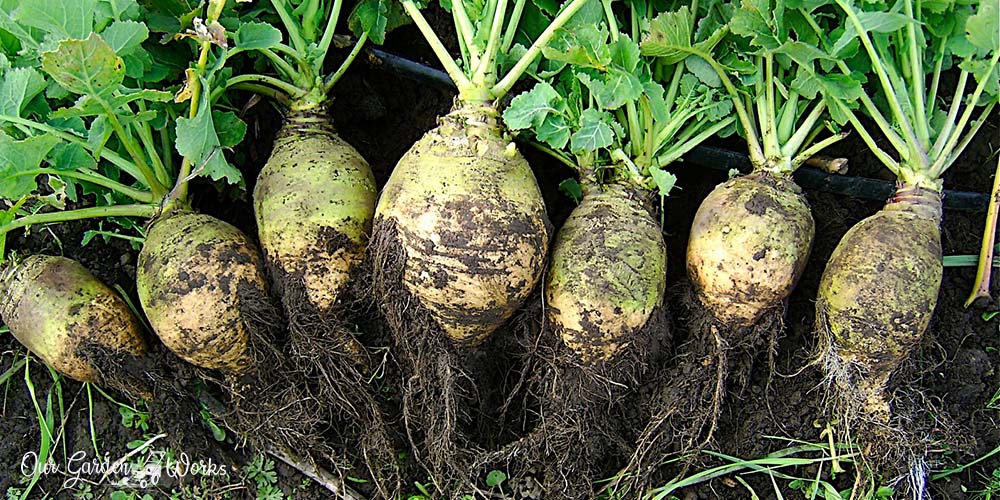There are times that you won’t be able to consume your rutabagas right away. You probably have an abundance of rutabagas due to the harvesting season or you bought more than what you need.
Either way, you might be thinking of tossing it into the trash, or adding it to your compost?
However, did you know that you can keep your excess rutabagas, and store them for several months?
Well, in this post, we will be sharing with you some helpful tips on how to store rutabaga to reduce food waste and extend its shelf life.
What is a Rutabaga?
Rutabaga is a kind of seasonal root crop/vegetable common in Canada, Great Britain, Northern Europe, and some parts of the United States. Its name is swede in the UK and other Commonwealth countries, and neep in Scotland.
It is also known as turnip in other English-speaking areas (not to be mistaken with the white turnip, which is a different variety of root vegetables).
Like other root crops, rutabagas usually grow during the cool season. It requires a longer time to grow before the yielding stage due to its slow growth characteristic. It takes at least two weeks after planting before it starts to sprout. Then another 80 to 100 days before being harvest-ready.
Why is It Important To Store Rutabagas Properly?
The way of harvesting and storing rutabagas greatly affects their flavor. There are 4 different ways on how to do this, which include:
- Leaving it on the ground
- Keeping it in a root cellar
- Storing it in Barrels
- Cooling or freezing it in the fridge
Rutabagas require a specific temperature during storage. If it is not cool enough, or even too cold, its flavor will not be good for consumption.
There is also perfect timing in pulling it from the ground if you opt for that option. The longer it stays on the ground, the sweeter it will become.
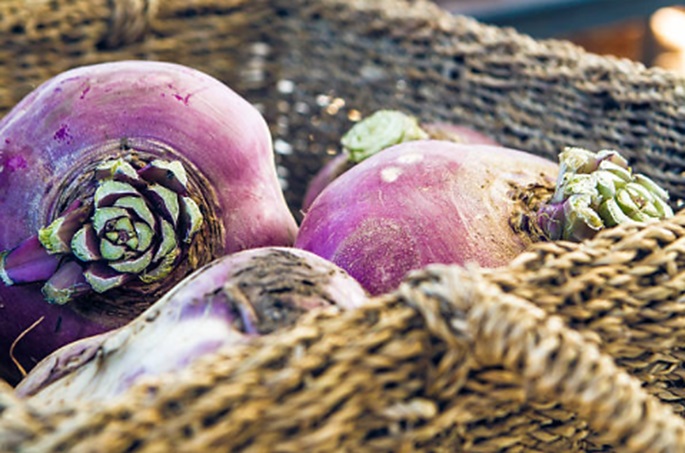
4 Powerful Ways To Store Rutabaga
Like other root crops, rutabagas are best included as an extra ingredient for several dishes like soups and stews due to their sweet and mildly peppery flavor.
Yet, it is not available throughout the year. Rutabagas are usually harvested from October to November but their availability is usually until March only.
In this case, you have an option to preserve them and make them readily available during the winter season.
Here are 4 powerful ways on how to store rutabaga for your future consumption:
1. Leave It On The Ground
One way to store your rutabaga is to leave it on the ground where it is planted. If you have your own garden and planted the crop yourself, this is one of the best options. It is proven that this method improves the taste of the rutabaga.
To do this, you must protect the soil from freezing. The soil must maintain a temperature of at least 34°F to 40°F throughout the winter or fall until the time of harvest.
You can do this by adding 10 to 12 inches of insulation using the following materials:
- Fallen or shredded leaves
- Straw and Hay
- Mulch with composted wood chips or bark
2. Keep It in a Root Cellar
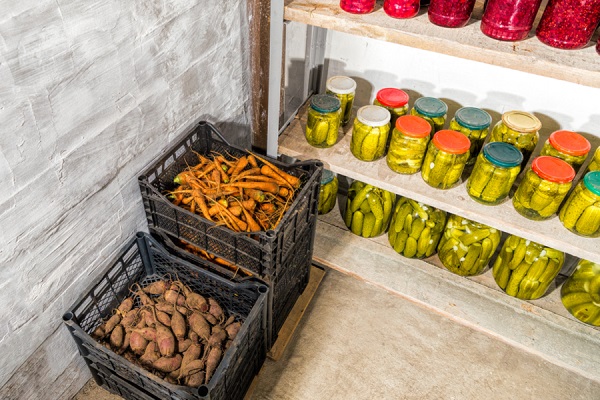
If your rutabaga can no longer stay in the soil, you may want to dig it already. We know that we cannot keep the rutabagas buried longer if the temperature starts to get extremely cold.
Once the ground freezes, it will be very hard to pull it out. By this time, you will need to prepare them for storing in other areas like a root cellar. Here’s how:
- Step 1: Clean the rutabagas using a dry rag or brush to remove the soil. Do not wipe it with a damp cloth, and never wash or rinse them as getting them wet may result in the growth of molds.
- Step 2: Make sure that the temperature is between 32 and 40°F in the root cellar. This will maintain the humidity and temperature that the rutabagas require.
- Step 3: Place the rutabagas in wooden crates (or wooden buckets) without touching each other. Place them with layers of straw, peat moss, or damp sand. Make sure that there is enough space for the air to circulate within the container.
- Step 4: Check it from time to time if it is still in good condition. Look out for the roots that show signs of spoilage and remove them from the container.
3. Store Rutabagas in Barrels
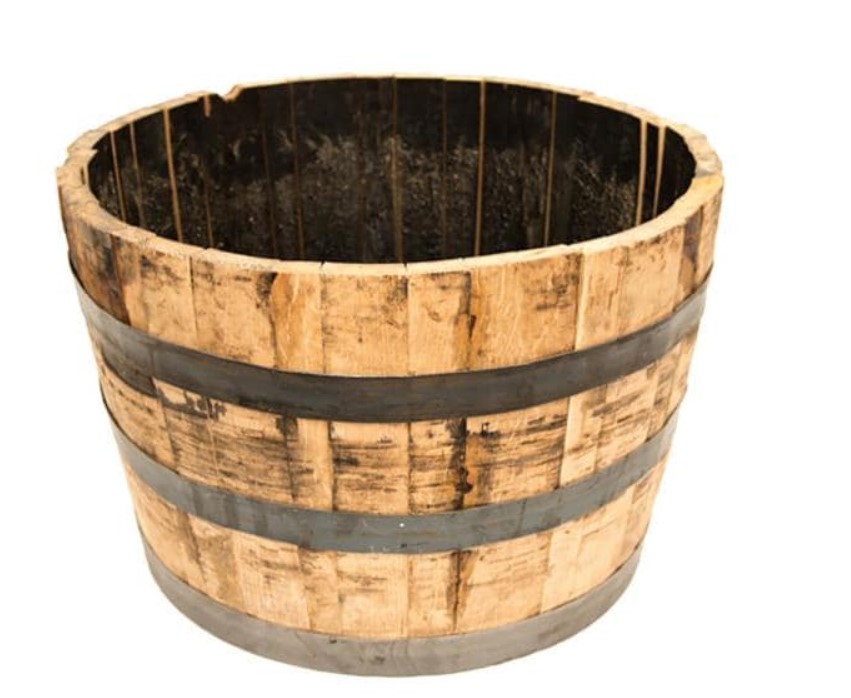
If you do not have a root cellar, you can create your own by storing the rutabagas in wooden barrels.
The storage process is almost similar, but you have to start with a layer of moist peat moss or sand at the bottom of the barrel. You can do this by:
- Step 1: Place the rutabagas on top of a layer of moist peat moss or sand with spaces enough for the air to circulate.
- Step 2: Cover the top of the barrel with sacks made of jute or burlap sacks, which are filled with the same layer of insulation you used at the bottom of the barrel.
- Step 3: Final step is to make sure that the barrel is almost completely buried in the ground with only the opening exposed. This is to make sure that your rutabagas are not exposed to light. Exposure could result in a difference in the required temperature.
4. Cool or Freeze Rutabagas in The Fridge
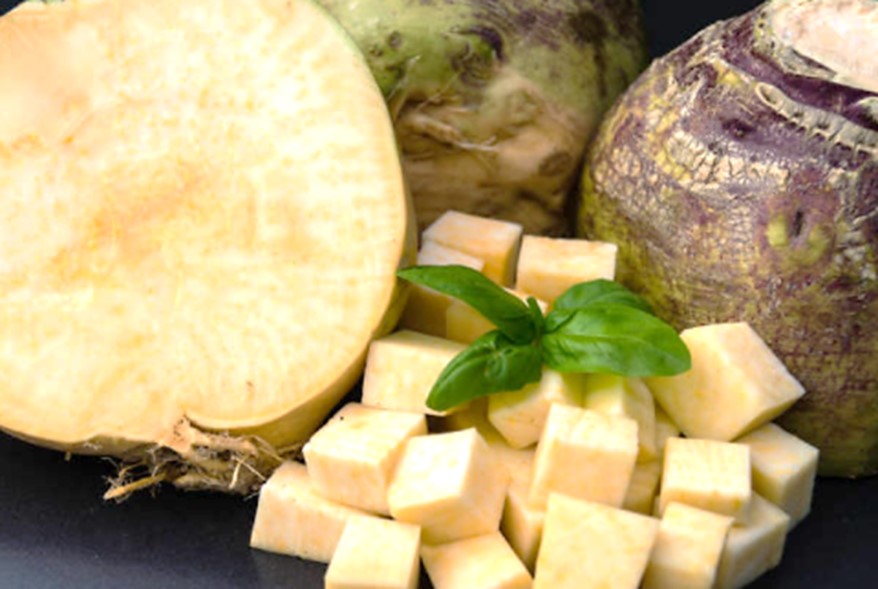
The final method is to keep rutabagas chilled or frozen inside your fridge. This method is one of the most common and convenient steps since the root crop will be ready for consumption at any time you need them.
To do this, you must follow the steps below:
- Step 1: Clean the rutabaga by rinsing and washing off the dirt from its skin. This will help lessen the potential contaminants in the root crop which might cause spoilage.
- Step 2: The following steps are only applicable for the cooling method only.
- Wrap the cleaned rutabaga with a moist paper towel or cloth.
- Get a paper bag and punch holes in it with at least 1-inch space.
- Place the wrapped rutabaga inside the paper bag.
- Keep the bags inside the crisper drawer of your fridge.
Pro tip: Cooling rutabagas can make them last for at least a month.
- Step 3: The following steps are only applicable for the freezing method only.
- Remove the skin of the rutabaga using a paring knife or vegetable peeler.
- Cut the rutabaga into small dice or cubes.
- Blanch the rutabaga by adding it into boiling water for at least 2 to 3 minutes.
- After removing the rutabaga from hot water, give it an ice bath for another 2 to 3 minutes.
- Once it cooled down, place it in a zip lock or freezer bag and remove as much air as possible. You can also mash the rutabaga before placing it inside the bags.
- Put it inside the freezer, at least at the deepest part or within the walls to make sure that it freezes quickly.
4 Helpful Tips To Store Rutabagas
Here are some helpful tips to guide you in your journey to properly storing rutabagas.
- Fruits such as apples, lemons, and oranges, rutabagas can also be given a food-safe wax coating. This protects the root crop from moisture and humidity within the duration of storage. The wax can be easily removed together with the skin during the peeling process. Simply follow the steps below.
How to coat rutabagas with wax
- First, melt the edible wax on low heat using a double boiler. Set aside. You can use paraffin or carnauba wax.
- Wash the rutabaga well. Remove excess water and let it dry
- Trim the roots and stems as close to the vegetable as possible. Don’t get rid of the leaves. Use them as an additional ingredient for other side dishes.
- Wipe the rutabagas again with a cloth or towel to make sure that it is completely dry.
- Coat the rutabagas with wax by either of the following steps:
- Place the rutabagas on a cooling rack and coat it with wax by using a pastry brush. Make sure that it is completely coated including all its nooks and crannies.
- Dip the rutabaga completely on the melted wax without leaving any of its parts.
- Let the wax cool and harden.
- Store the rutabaga in a cool, dry, and dark place.
- Sort out the rutabagas by size before storing them. Like turnips, small and medium-sized rutabagas are best to be kept in the fridge because they have a sweeter and richer flavor. Large rutabagas are best kept whole to maintain their natural flavor.
- If rutabagas are kept in the freezer, make sure to keep them away from raw meat and meat juices to prevent cross-contamination.
- When choosing rutabagas from the market, look for the ones that are round or oval-shaped with firm and smooth skin. Rutabagas that are heavier than they look are better. This means that they are denser which results in a sweeter taste compared to the lighter ones which are more fibrous.
Health Benefits of Rutabagas
Rutabagas are root crops with colors that range from brownish-white to purple. They are proven to be full of nutrients and are also low in calories and fat-free which is good for the body.
Some of these nutrients are:
- Vitamin A – for normal vision, the immune system, and reproductive health
- Vitamin B6 – benefits the central nervous system and faster metabolism
- Vitamin C – necessary for the growth, development, and repair of all body tissues
- Calcium – for strong bones and teeth
- Fiber – for weight loss and improved digestive system
- Magnesium – for muscle and nerve function and energy production
- Potassium – serves as an electrolyte that helps keep body functions normal
Frequently Asked Questions (FAQs)
How long can I store rutabaga?
If properly stored, rutabagas can last from 6 months up to one year. Here’s the lifespan depending on how you store them:
- Leaving it on the ground: lasts until the ground freezes
- Root cellar and/or wooden barrels: 4 to 6 months
- Crisper drawer: at least a month
- Freezer: 6 months to 1 year
Can I eat rutabagas with wax coating?
Rutabagas from markets are coated with food-safe wax to prolong their freshness. However, you need to wash and peel off the skin with a wax coating before food preparation.
What will happen to rutabagas if not kept in the desired coolness?
Rutabagas that are not kept in a cool, dry place will spoil faster. The cool temperature helps lessen the root respiration and water loss. It can also help prevent storage burns.
Can I eat fresh rutabagas?
Yes and No. You can eat rutabagas without the fancy cooking recipes, but you have to at least blanch them before eating.
Are rutabagas and turnips the same?
Rutabaga is a relative of turnips. They both belong to the mustard family called Cruciferae, and the genus Brassica, under the classification of Brassica Napobrassica. Some say that rutabaga is a crossbreed of turnip and cabbage.
What does rutabaga taste like?
Rutabagas are known to have a sweet and mildly peppery taste. Based on its size, the smaller the rutabaga, the tastier it is. Also, the length of its stay in the ground before harvest contributes to its sweetness.
Final Thoughts
Storing rutabagas is an easy and practical approach to preventing food waste and extending their shelf-life. You will have some root crops ready during their off-season by choosing the method that best works for you.
Whether you harvest them yourself or buy them from the market, follow the proper steps of storing them to keep them from spoiling.
We hope that these helpful tips on how to store rutabaga gave you some ideas to make them last until the winter season.
If you find this post informative, please share this post with your friends and let us know about the storage option that you chose in the comment section below.
